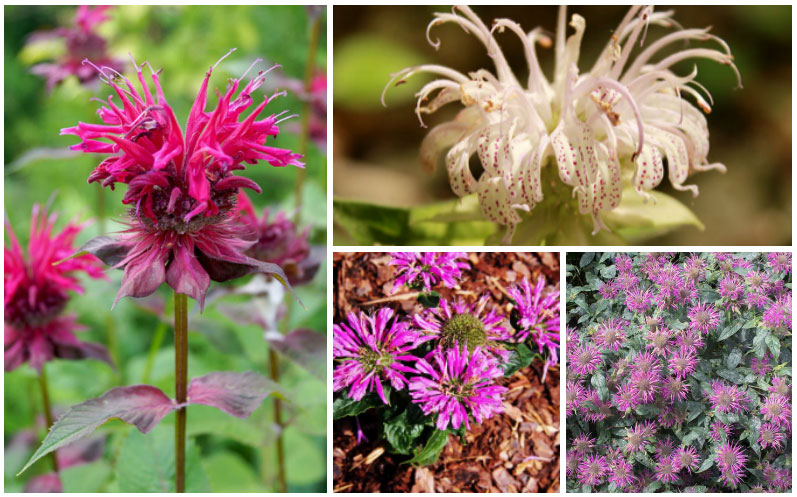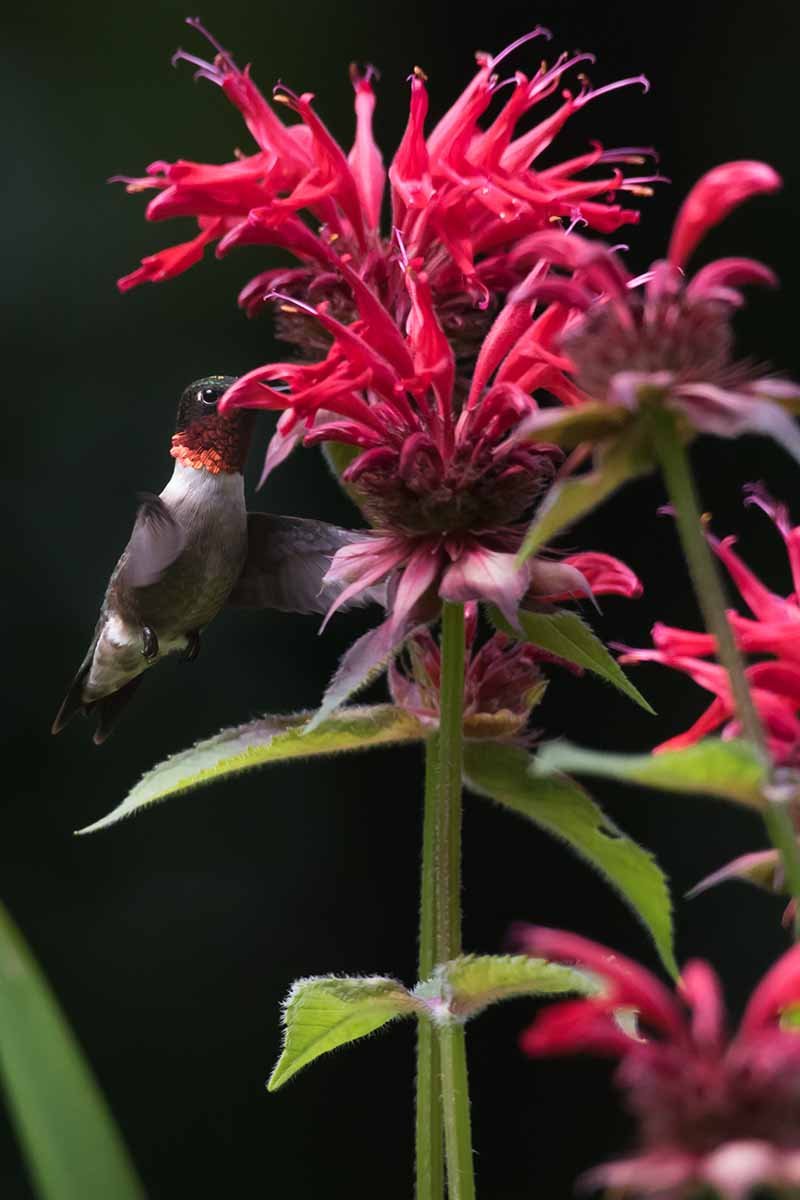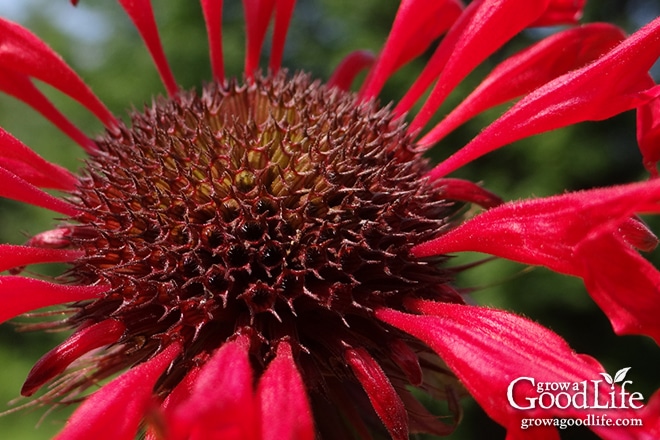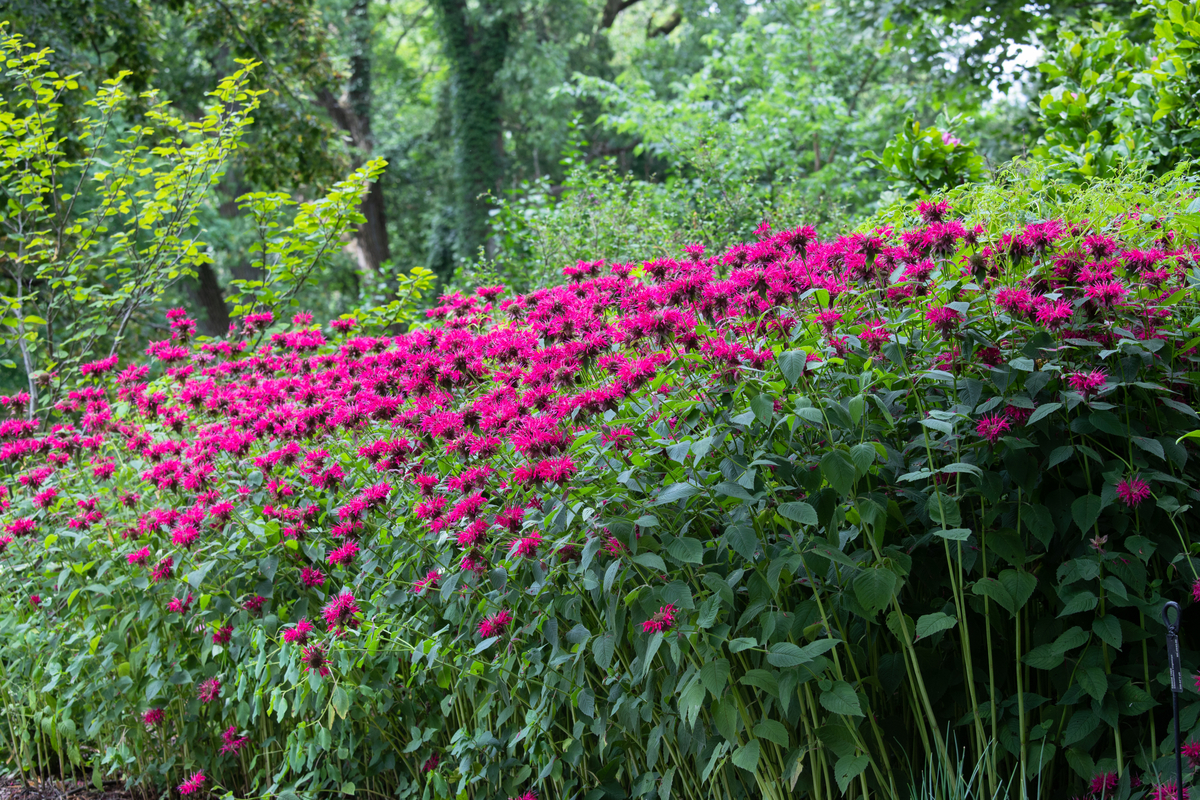1 Bee Balm Bloom Time – Bustling Nest
- Author: bustlingnest.com
- Published Date: 11/30/2021
- Review: 4.85 (939 vote)
- Summary: · What Do Flowers Look Like? The petals of the bee balm flower can be pink, red, purple, and white. Overall, the flower has an open,
- Source: 🔗
2 How to Grow Bee Balm (Monarda) & Attract Pollinators

- Author: empressofdirt.net
- Published Date: 05/28/2022
- Review: 4.63 (240 vote)
- Summary: · Contents. Bee Balm Plant Fact & Growing Tips; Bee Balm Seeds. What do the seeds look like? Frequently-Asked Questions
- Source: 🔗
3 How to Grow: Bee Balm

- Author: gardeningwithcharlie.com
- Published Date: 01/18/2022
- Review: 4.46 (432 vote)
- Summary: I like to let it ramble though a perennial flower border next to tall garden phlox, rudbeckia, roses, and peonies. It looks best when allowed to grow in groups
- Matching search results: Bee balm is a perfect cottage garden plant. I like to let it ramble though a perennial flower border next to tall garden phlox, rudbeckia, roses, and peonies. It looks best when allowed to grow in groups to create a vivid color statement. Grow …
- Source: 🔗
4 Growing Monarda: When to Plant and How to Grow Bee Balm
- Author: hgtv.com
- Published Date: 10/25/2021
- Review: 4.21 (516 vote)
- Summary: These helpful garden visitors transfer pollen as they zip around the tube-shaped flowers, which are held in loose, daisy-like clusters. Bee balm plants were
- Matching search results: Bee balm is a perfect cottage garden plant. I like to let it ramble though a perennial flower border next to tall garden phlox, rudbeckia, roses, and peonies. It looks best when allowed to grow in groups to create a vivid color statement. Grow …
- Source: 🔗
5 All About Bee Balm, and Why Its Such an Important Garden Ally

- Author: gardenandhappy.com
- Published Date: 06/25/2022
- Review: 4 (367 vote)
- Summary: Bee balm, also known as horsemint or wild bergamot, is a wonderful member of … are a mass of individual flowers that look like clustered, fanning tubes
- Matching search results: Are you familiar with bee balm? Also known by its scientific name, Monarda, it’s a flowering plant genus in the mint family. It’s also known as horsemint and wild bergamot, and is native to North America. This flower—which smells a bit like …
- Source: 🔗
6 10 Different Varieties of Bee Balm (Monarda)

- Author: gardenloversclub.com
- Published Date: 04/30/2022
- Review: 3.86 (419 vote)
- Summary: Monarda or bee balm is a perennial that is native to North America. The plant produces beautiful flowers in purple, red, pink or white. The green foliage of
- Matching search results: The Monarda Balmy Purple variety produces beautiful pink flowers. It blooms from late spring through the end of summer. It grows best in full sun or partial shade and moist but well-drained soil. The Balmy purple bee balm variety will look great in …
- Source: 🔗
7 Monarda: how to grow & care for bee balm plants
- Author: plantura.garden
- Published Date: 01/05/2022
- Review: 3.7 (372 vote)
- Summary: Despite the name, it is not related to the true bergamot (Citrus bergamia), though the leaves do have a similar fruity, citrusy scent. Perennial bee balm
- Matching search results: Whether planting bee balm in a pot or in the garden, we recommend using a high-quality potting soil, such as our Plantura Organic Flower Compost. Our sustainable, peat-free substrate has a high compost content, which helps to increase water …
- Source: 🔗
8 Monarda Didyma – Complete Guide to Red Bee Balm

- Author: growitbuildit.com
- Published Date: 02/05/2022
- Review: 3.48 (445 vote)
- Summary: After growing Bee Balm (Monarda didyma) for many years I’ve learned all you need to … Does Bee Balm like sun or shade? … Let’s have a look at those now
- Matching search results: Bee Balm, and all members of the Monarda genus are quite susceptible to Powdery Mildew, which is a fungus. Properly spacing Bee Balm plants 2-3′ apart will help increase airflow that will keep the leaves more dry. The drier the leaves, the less …
- Source: 🔗
9 How to Choose, Plant, and Take Care of Your Bee Balm
- Author: harwoodsgardensupplies.com.au
- Published Date: 06/19/2022
- Review: 3.22 (452 vote)
- Summary: · The basil beebalm can grow up to 12 inches (30 cm) tall. Its leaves are either lance-like or oblong with small teeth and hairs. Its flowers are
- Matching search results: Bee Balm, and all members of the Monarda genus are quite susceptible to Powdery Mildew, which is a fungus. Properly spacing Bee Balm plants 2-3′ apart will help increase airflow that will keep the leaves more dry. The drier the leaves, the less …
- Source: 🔗
10 Bee Balm 101: HOW & WHY You Should Grow This Native Plant!

- Author: birdwatchinghq.com
- Published Date: 11/17/2021
- Review: 3.13 (454 vote)
- Summary: Bee Balm (Monarda) is an easy to grow perennial belonging to the mint family and is endemic to North America. The plant features long, twisted, or whorled
- Matching search results: Lastly, some people prefer wild cultivars and therefore go looking for it in its natural habitat. You’re most likely to find wild Monarda in sunny, dry fields or open meadows. They are especially plentiful near limestone glades. If you do find Bee …
- Source: 🔗
11 How to Grow Bee Balm: Bring Out the Hummingbirds!

- Author: gardenerspath.com
- Published Date: 11/15/2021
- Review: 2.84 (59 vote)
- Summary: · M. fistulosa, also known as wild bergamot, has similar shaped blooms of light purple or pink, and can be found growing wild in fields and
- Matching search results: Bee balm grows well in hardiness zones 3-9, and is best planted in full sun, though it will tolerate shade in hotter areas, and can benefit from afternoon shade in very warm climates, which will protect plants from heat and lengthen the flowering …
- Source: 🔗
12 Bee Balm Flower Plant – How To Plant Bee Balm And Bee Balm Care
- Author: gardeningknowhow.com
- Published Date: 09/03/2022
- Review: 2.83 (158 vote)
- Summary: The bee balm flower has an open, daisy-like shape, with tubular petals in shades of red, pink, purple, and white . Bee balm plants are perennial, coming back year after year to add cheerful color to your garden
- Matching search results: Bee balm grows well in hardiness zones 3-9, and is best planted in full sun, though it will tolerate shade in hotter areas, and can benefit from afternoon shade in very warm climates, which will protect plants from heat and lengthen the flowering …
- Source: 🔗
13 Bee balm care and growing guide: top tips for Monarda – Gardeningetc
- Author: gardeningetc.com
- Published Date: 10/10/2022
- Review: 2.74 (99 vote)
- Summary: · Bee balms appreciate soil that does not dry out for long periods. In American states with hot summers, and in UK gardens with light soil that
- Matching search results: Bee balm grows well in hardiness zones 3-9, and is best planted in full sun, though it will tolerate shade in hotter areas, and can benefit from afternoon shade in very warm climates, which will protect plants from heat and lengthen the flowering …
- Source: 🔗
14 How to Grow, Harvest, and Preserve Bee Balm (Monarda)

- Author: growagoodlife.com
- Published Date: 10/25/2021
- Review: 2.62 (148 vote)
- Summary: Bee balm (Monarda) is a popular perennial plant used in bee and butterfly gardens. … Not sweet mint like peppermint, but more pungent making it a nice
- Matching search results: Bee balm grows in a clump with 3-foot tall stalks. Most bee balm varieties are perennials and will grow in average to well-drained soil in full sun. You can grow bee balm from seed, but it establishes quicker when planted from divisions from a …
- Source: 🔗
15 Growing Bee Balm From Seed
- Author: seedneeds.com
- Published Date: 11/30/2021
- Review: 2.4 (75 vote)
- Summary: · You might occasionally see Bee Balm plants growing in zoo’s, … they do not grow as an invasive species like spearmint or peppermint
- Matching search results: We suggest that you test your soils pH level to achieve best results. The average pH level should be between 6.0 and 6.7 for Bee Balm plants. The plants can be watered lightly each day, especially when the leaves look a bit dry. If possible, use a …
- Source: 🔗
16 15 Reasons To Grow Bee Balm How To Grow It

- Author: bloomingbackyard.com
- Published Date: 09/09/2022
- Review: 2.32 (157 vote)
- Summary: · 2. Wild Looking Wildlife Champion. Bee Balm’s flamboyant shaggy flowers attract and support wildlife including nectar-loving hummingbirds, bees,
- Matching search results: Bee Balm attracts many insects, not all of them good. Although Bee Balm may suffer minor insect damage, these insects attract and feed beneficial insects and birds, one of Bee Balms’ great benefits. The flamboyant flowers will hopefully make up for …
- Source: 🔗
17 What Does a Bee Balm Seed Look Like?
- Author: homeguides.sfgate.com
- Published Date: 01/22/2022
- Review: 2.27 (146 vote)
- Summary: · What Does a Bee Balm Seed Look Like?. Bee balm (Monarda didyma) are native American wildflowers that grow wild along stream banks and in
- Matching search results: Bee Balm attracts many insects, not all of them good. Although Bee Balm may suffer minor insect damage, these insects attract and feed beneficial insects and birds, one of Bee Balms’ great benefits. The flamboyant flowers will hopefully make up for …
- Source: 🔗
18 Growing Bee Balm in the Home Garden

- Author: hortnews.extension.iastate.edu
- Published Date: 04/15/2022
- Review: 2.27 (126 vote)
- Summary: Plants won’t flower as heavily and are more susceptible to powdery mildew when grown in partial shade. Watering. Bee balms like an even supply of moisture
- Matching search results: Cultural practices can reduce the severity of powdery mildew. When planting bee balms, select a site in full sun and space plants 2 feet apart. Divide plants every 2 to 3 years and water during dry periods. Remove and destroy disease-infested plant …
- Source: 🔗